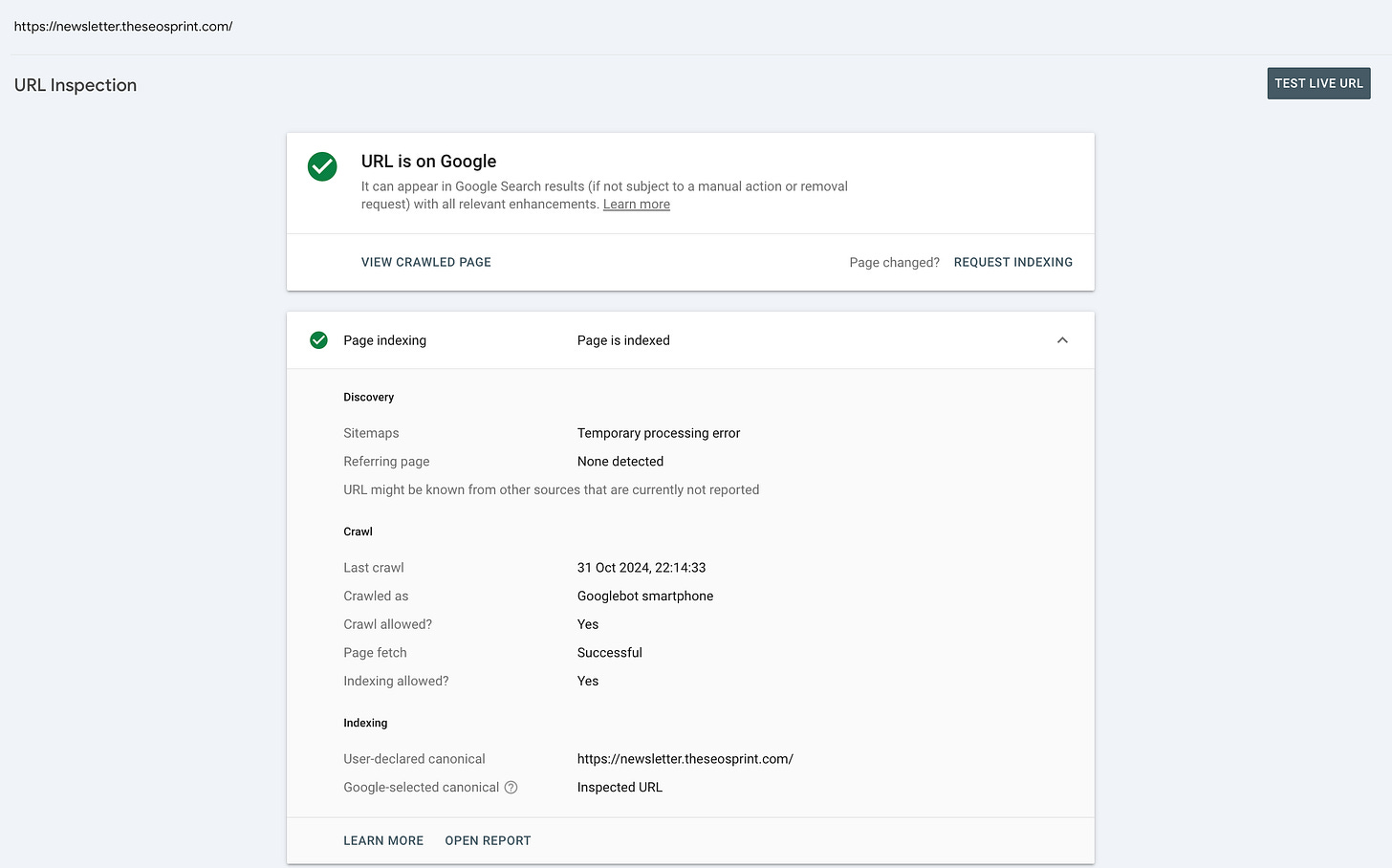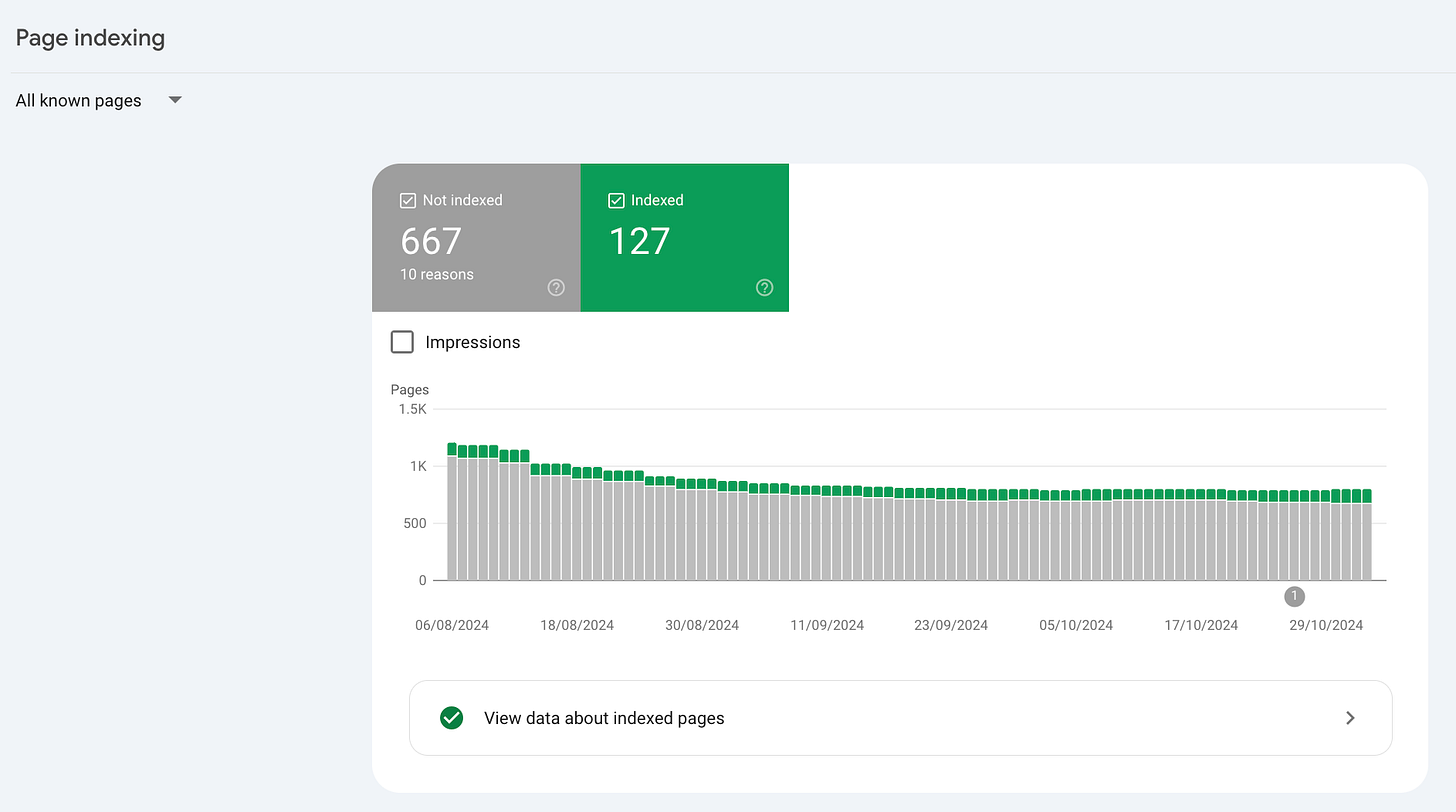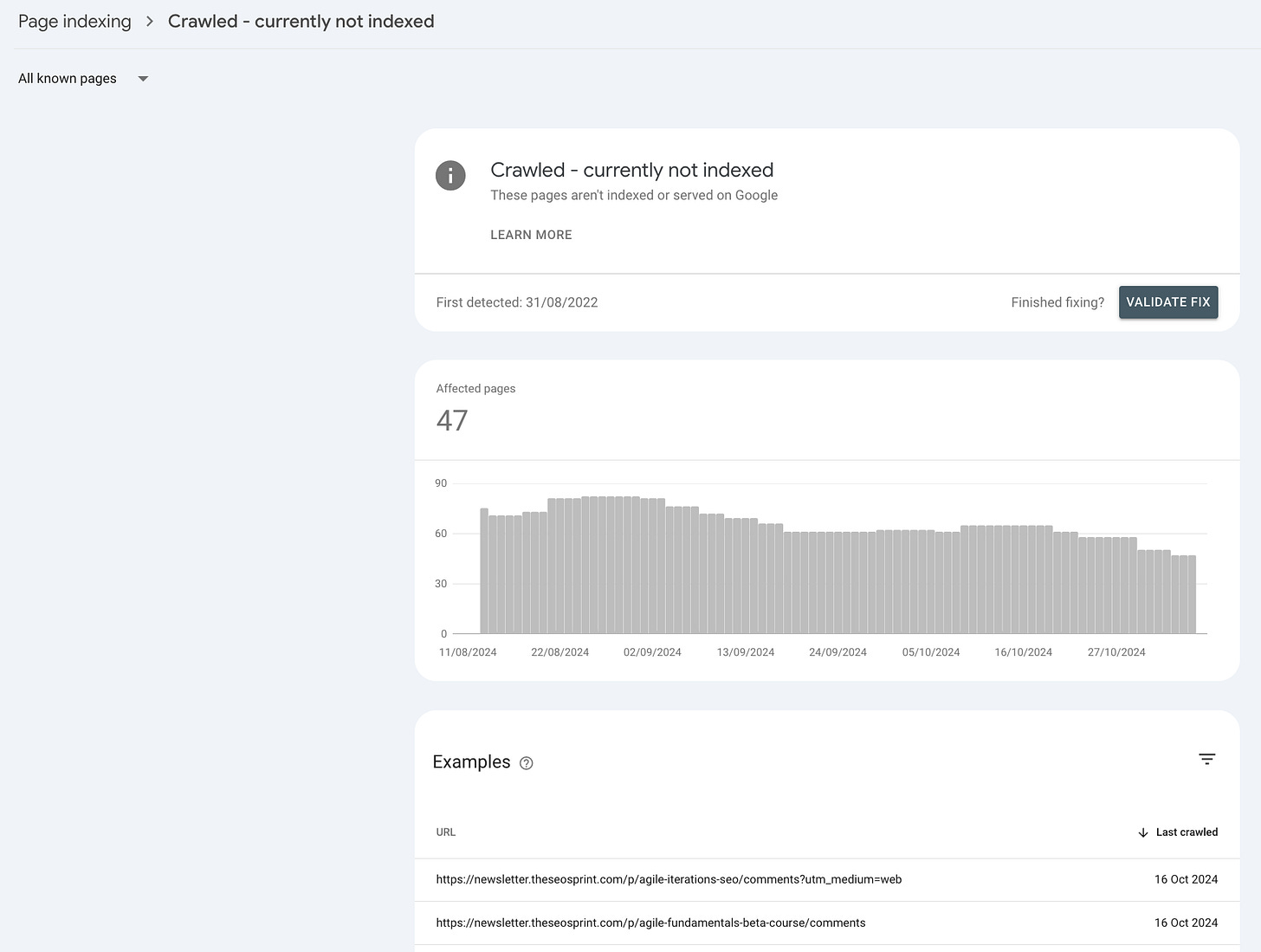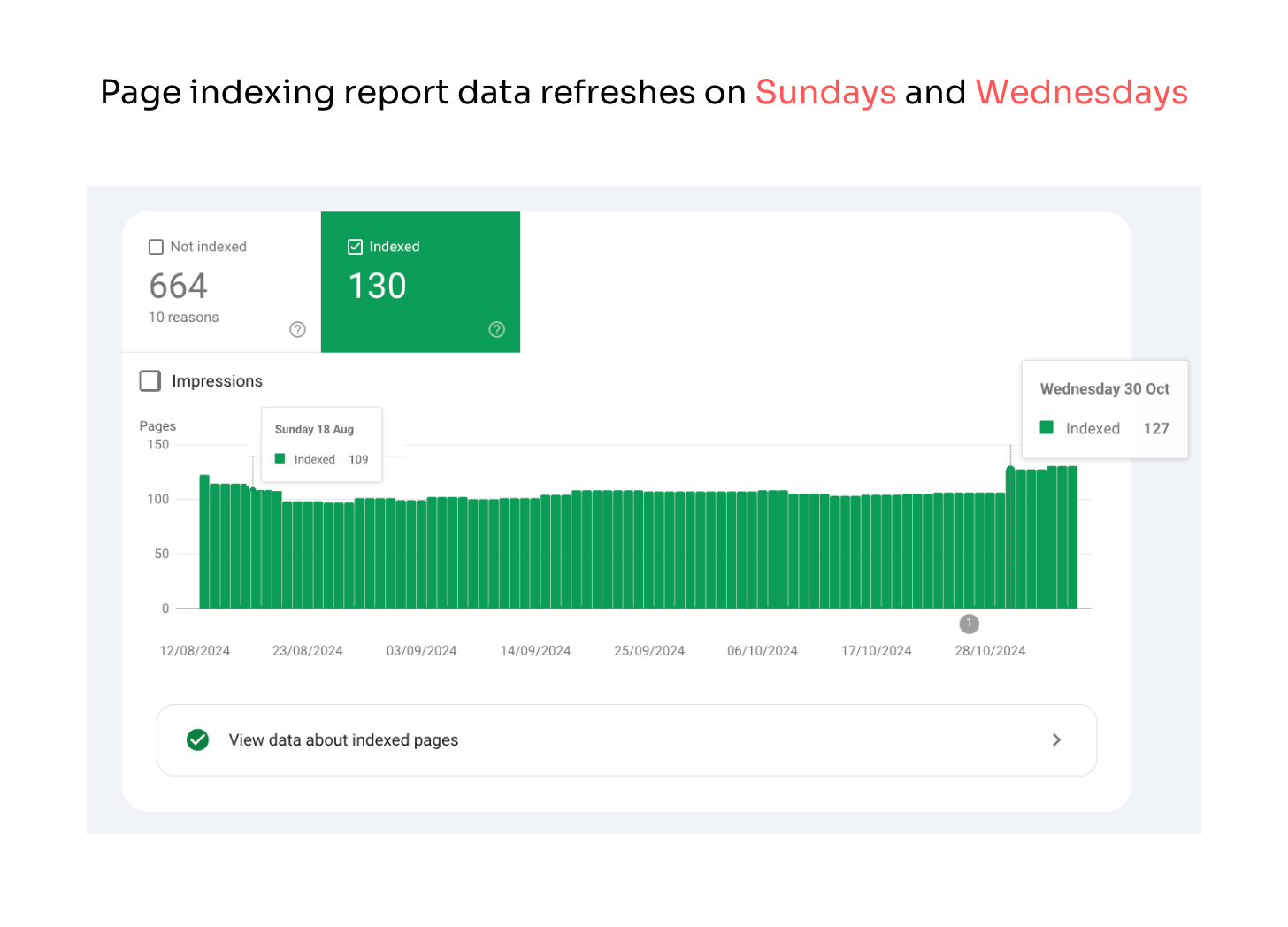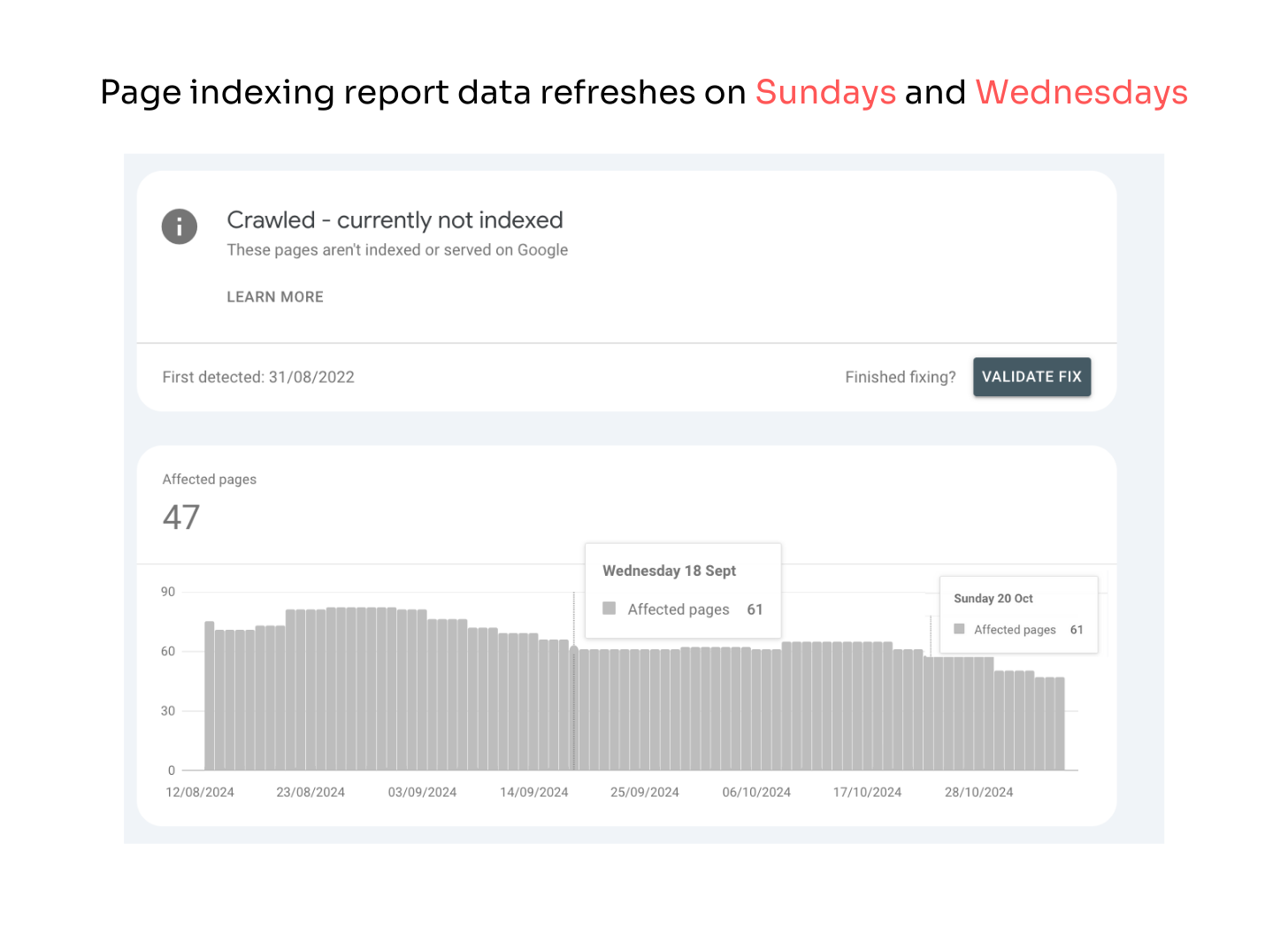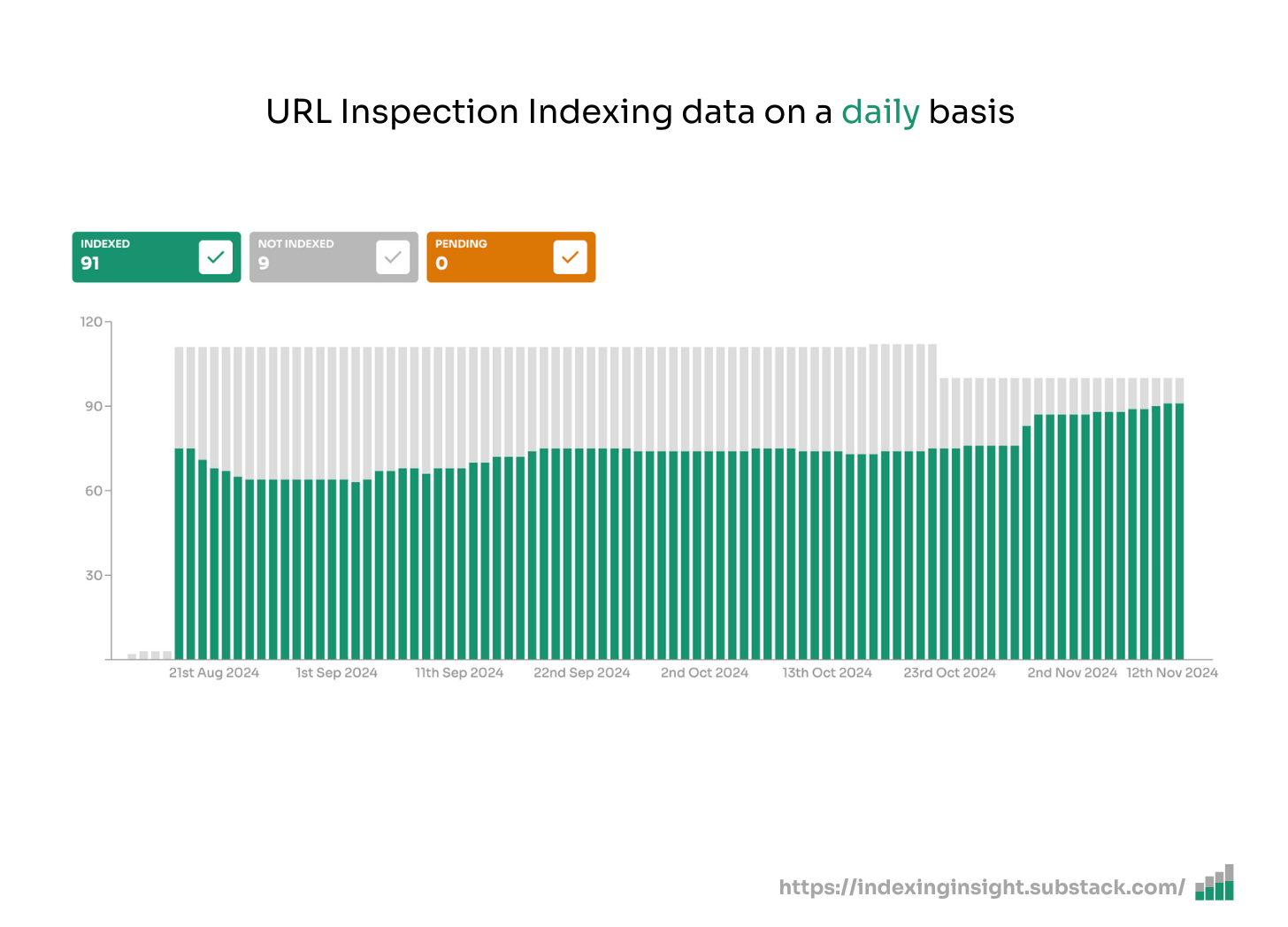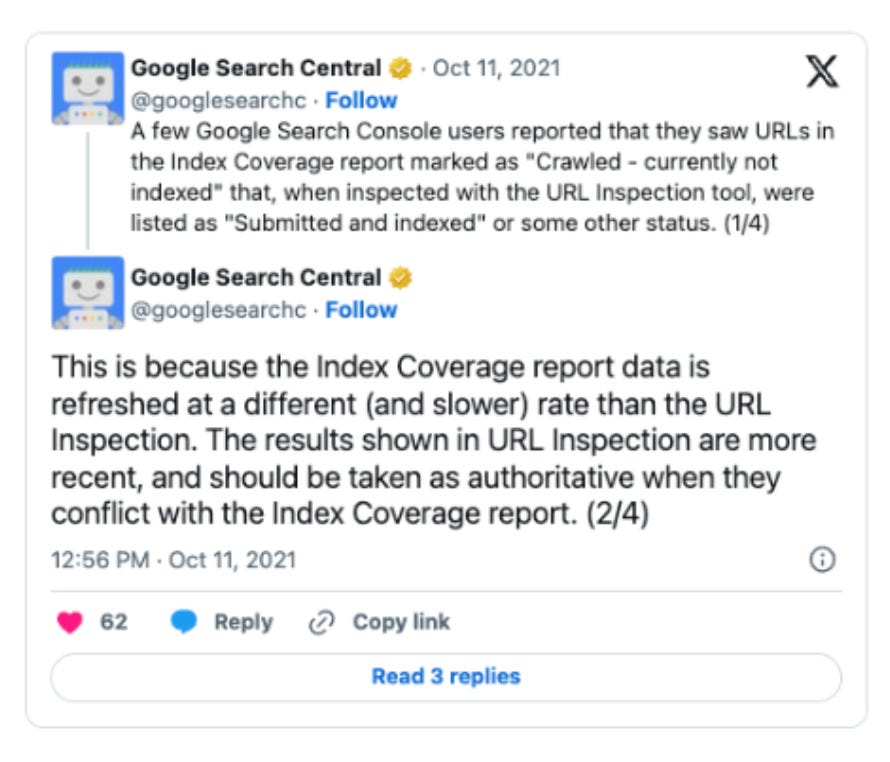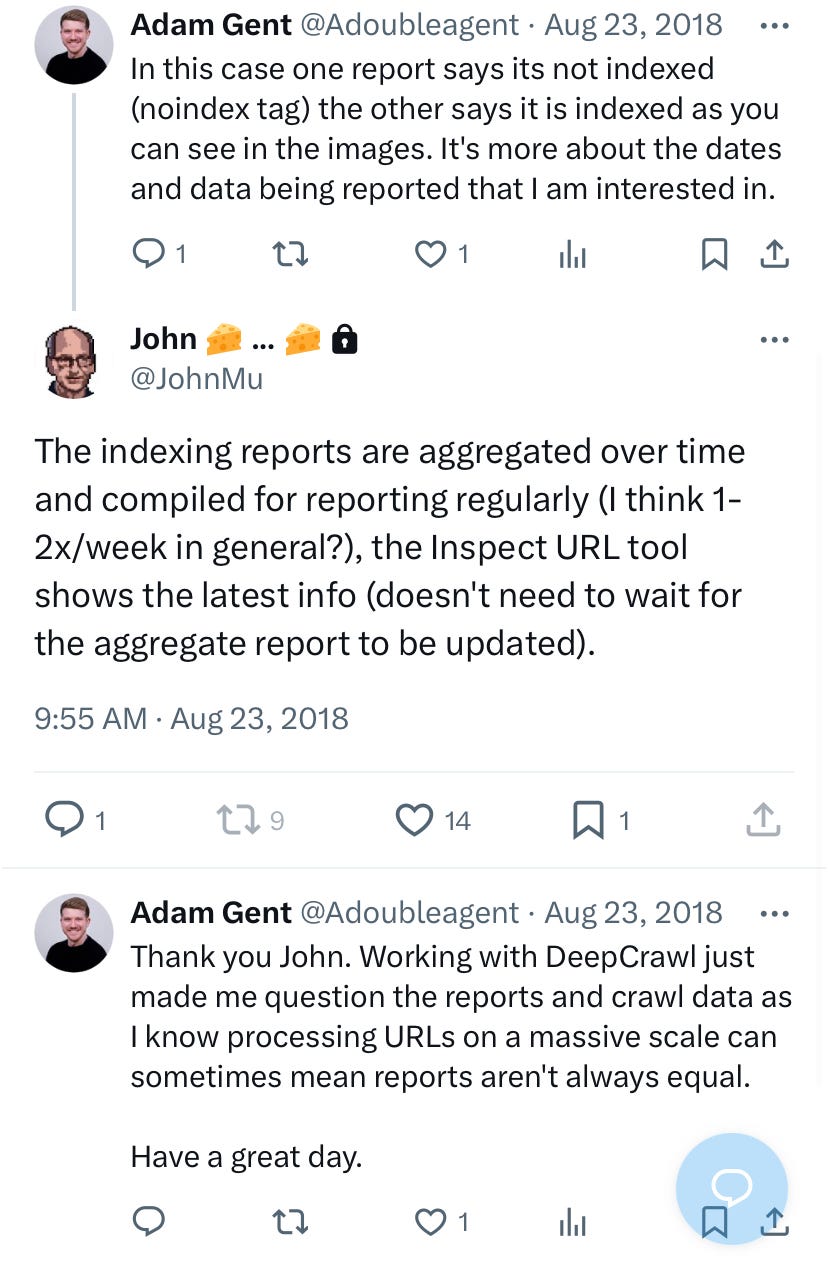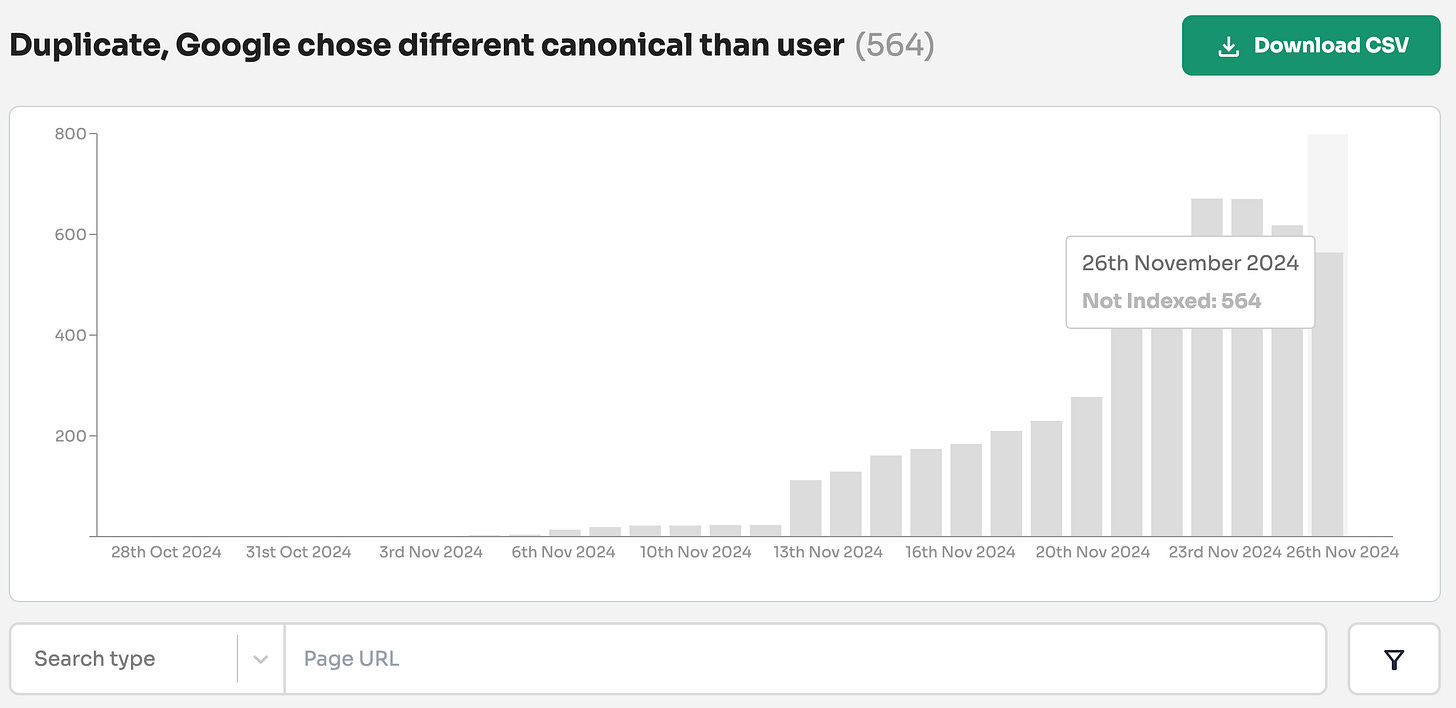URL Inspection Report vs Page Indexing Report: What's the difference?
Why the URL Inspection indexing data is the authoritative source in GSC.
Indexing Insight helps you monitor Google indexing for large-scale websites with 100,000 to 1 million pages. Check out a demo of the tool below 👇.
Google Search Console is misreporting ‘URL is unknown to Google’.
URL Inspection tool is the authority source for indexing data.
One problem many SEO professionals face is conflicting indexing states between page indexing reports and the URL inspection tool in Google Search Console.
This is caused due to the indexing refresh rates in the reports.
In this newsletter, I'll explain the difference between the report refresh rates and why SEOs need to understand the difference.
So, let's dive in.
🔄 What is the URL Inspection Tool?
The URL Inspection tool pulls live information from Google’s index about a single page URL. It allows you to test if a page URL is indexed or not indexed.
The tool gives information about:
Crawling
Indexing
Canonicals
Rich results
Experience
📊 What is the Page Indexing Report?
The page indexing report provides the indexing states of your pages in Google.
It provides a top-level summary of the pages that have been indexed and not indexed over the last 90 days. And a link to a report for the indexed pages.
It also lists reasons why Google has not indexed page URLs that have been crawled. These reasons are called index coverage states.
When you click on a reason (index coverage state), you are taken to a report showing you the affected pages over time and the list of 1,000 sample URLs.
⁉️ What is the Difference in the Indexing Data?
The biggest difference is how often indexing states are refresh rates:
📊 Page indexing report updates twice a week.
🔍 URL Inspection tool updates daily.
📊 Page Indexing Report Refreshes Twice a Week
This Google indexing data source updates twice a week.
The report refreshes the indexing data in the timeline graph on Sundays and Wednesdays during the week.
This happens for both Indexed and Not Indexed reports. Even the individual indexing state reports (e.g. ‘Crawled - currently not indexed’).
🔍 URL Inspection Tool
The index data refresh rate in the URL Inspection tool is more recent.
In Indexing Insights, we use the URL Inspection API to monitor page URL indexing states and can see the indexing state daily.
You can see the change in Indexed and Not Indexed states for page URLs over 90 days. These states change daily (rather than twice a week).
The refresh rate being more authoritative was confirmed by the Google Search Central team when the URL Inspection Tool and API in 2021.
John Mueller also confirmed this in 2018 on Twitter (by me, and I forgot I asked this question).
🧐 URL Inspection Tool is the Authority Source
The URL Inspection tool is the authority indexing data source.
The Google Search Central team confirmed that the URL Inspection Tool is the most recent and up-to-date data source for an indexing state. And should be considered authoritative when in conflict.
Indexing Insight uses the URL Inspection API (the most authoritative data source).
Our tool checks your page's indexing status daily, helping you identify any changes straight from Google’s own data warehouse.
📌 Summary
There is a difference in indexing refresh rates in reports.
In this newsletter, I’ve provided evidence that the URL Inspection tool is the most authoritative indexing data source. It refreshes much faster than the page indexing report in Google Search Console.
Indexing Insights uses the URL Inspection API to monitor indexing daily.
This allows our tool to refresh the page indexing data much faster than Google Search Console. And pull updated information straight from Google’s data warehouse about your pages.
Hopefully, this has helped clarify why you might see a difference between the page indexing report and the URL Inspection tool.
📊 What is Indexing Insight?
Indexing Insight is a tool designed to help you monitor Google indexing at scale. It’s for websites with 100K—1 million pages.
A lot of the insights in this newsletter are based on building this tool.
Subscribe to learn more about Google indexing and future tool announcements.




